Abstract
A series of penicillins characterized by the presence of a sulfoamino or a modified sulfoamino group in the side chain was subjected to in vitro antimicrobial screening tests. Although the most potent members of the series were less active than benzylpenicillin against gram-positive bacteria and comparably active against most gram-negative bacteria, they were, on the average, 8 to 16 times more effective against strains of Pseudomonas aeruginosa. In other comparative laboratory tests against P. aeruginosa, these compounds were about as active as carbenicillin and four to eight times more active than ampicillin. An examination of structure-activity relationships indicated that maximal potency was obtained with penicillins having an α-(aromatic or heteroaromatic)-α-sulfoaminoacetamido side chain. The compound with an α-phenyl group was comparable in activity to those having an α-(2- or 3-thienyl) group, whereas any modification in position or structure of the α-sulfoamino group reduced activity. Results of studies with a cell-free P. aeruginosa β-lactamase suggest that the marked inhibitory effects of α-sulfoamino penicillins for P. aeruginosa can be attributed, at least in part, to their high degree of resistance to this enzyme. Some derivatives, however, had weak antipseudomonal activity, despite possessing a high degree of β-lactamase resistance.
Full text
PDF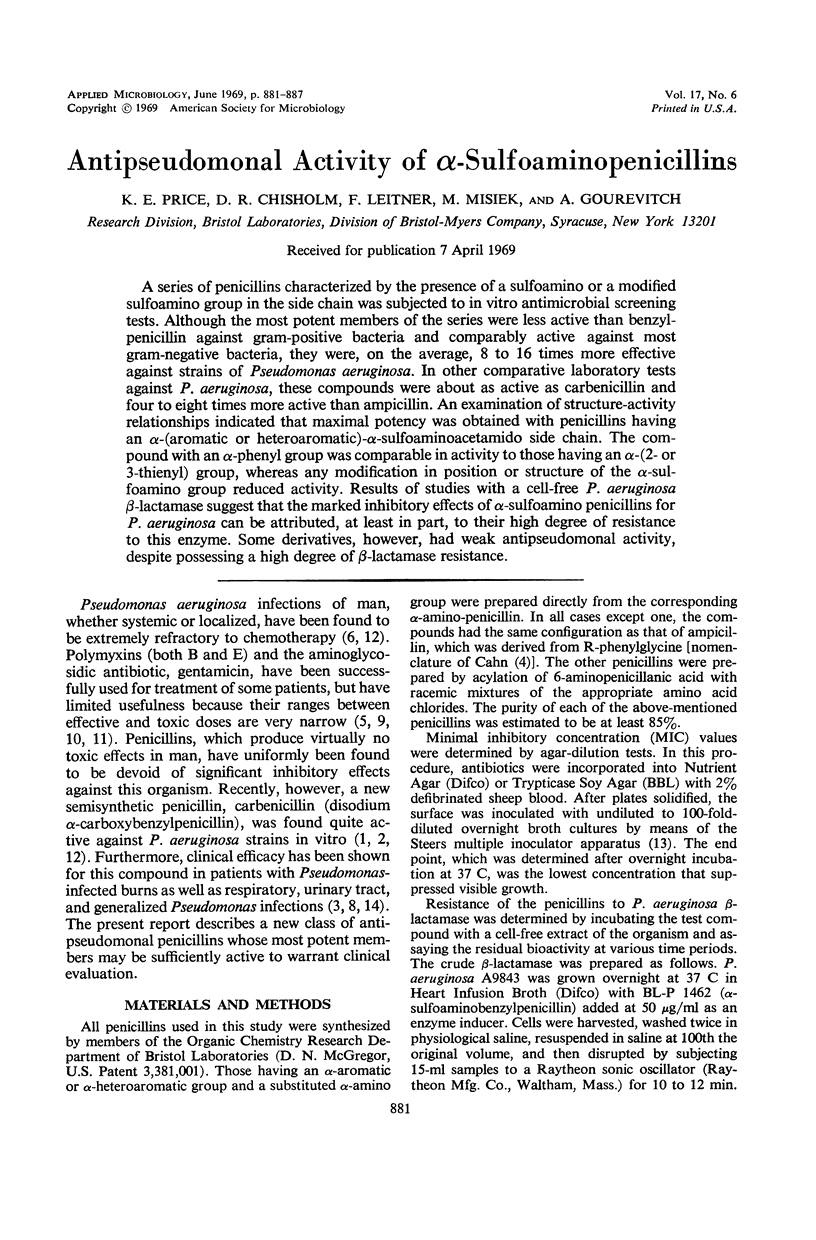
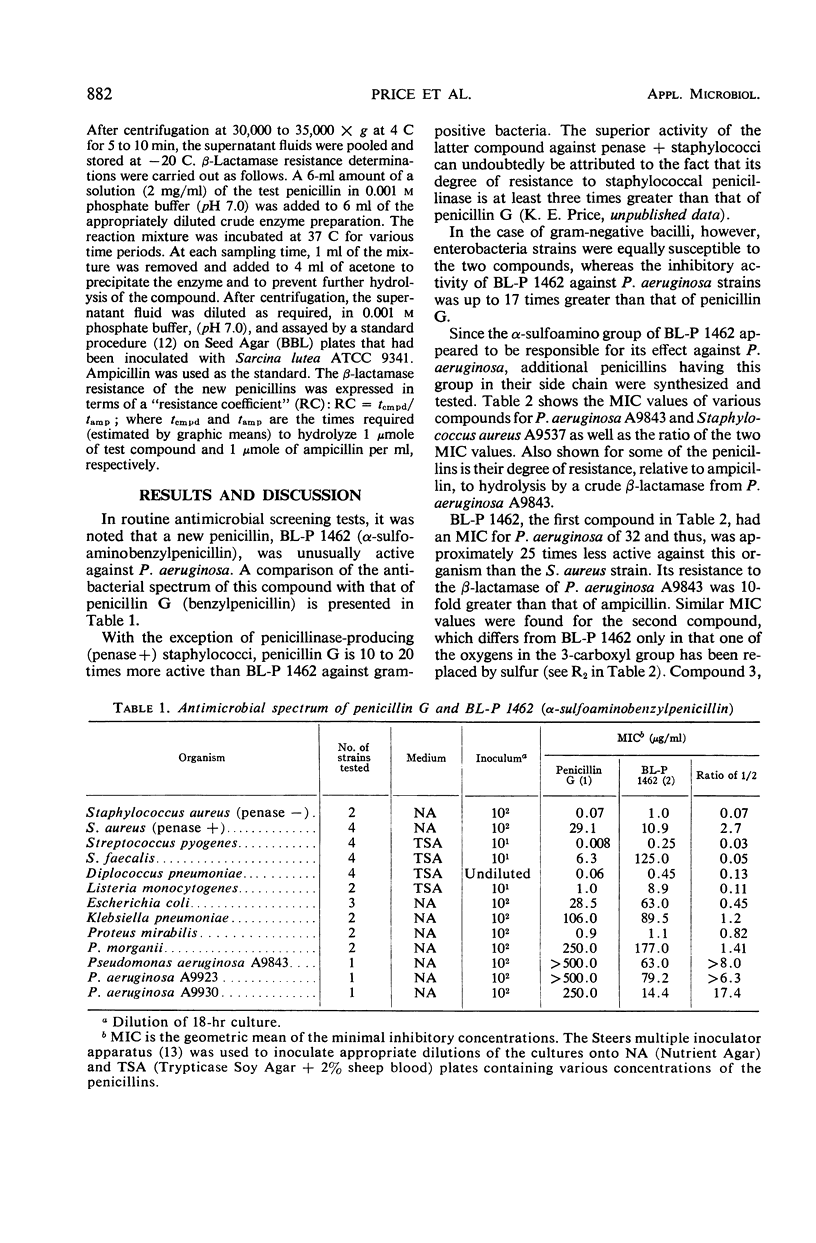
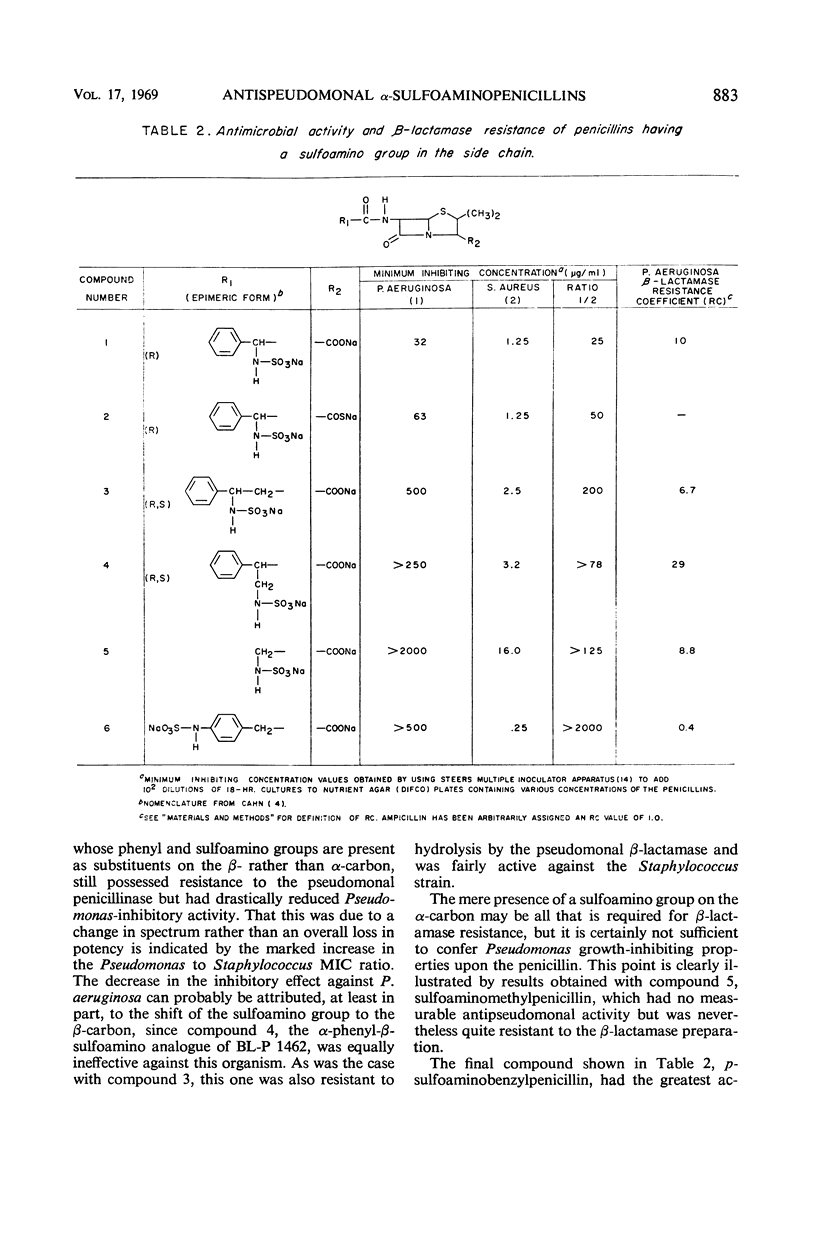
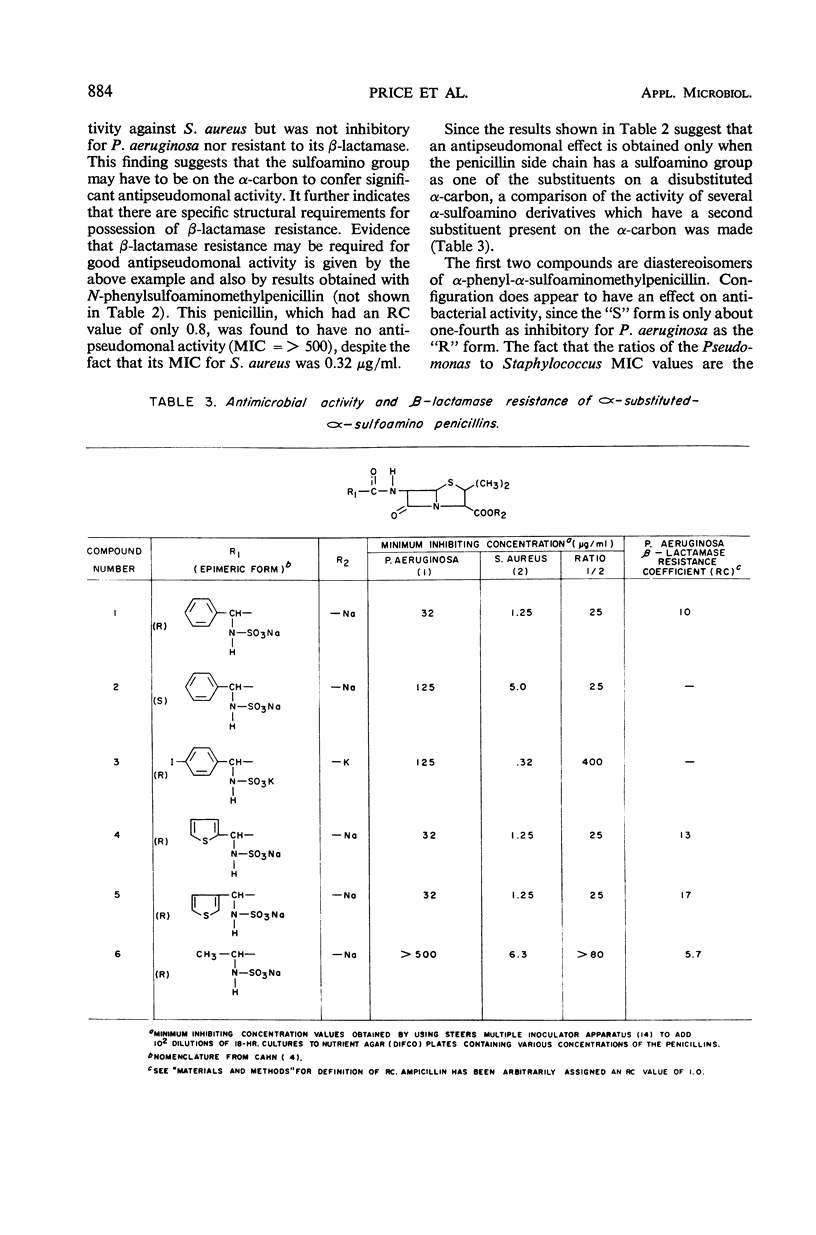
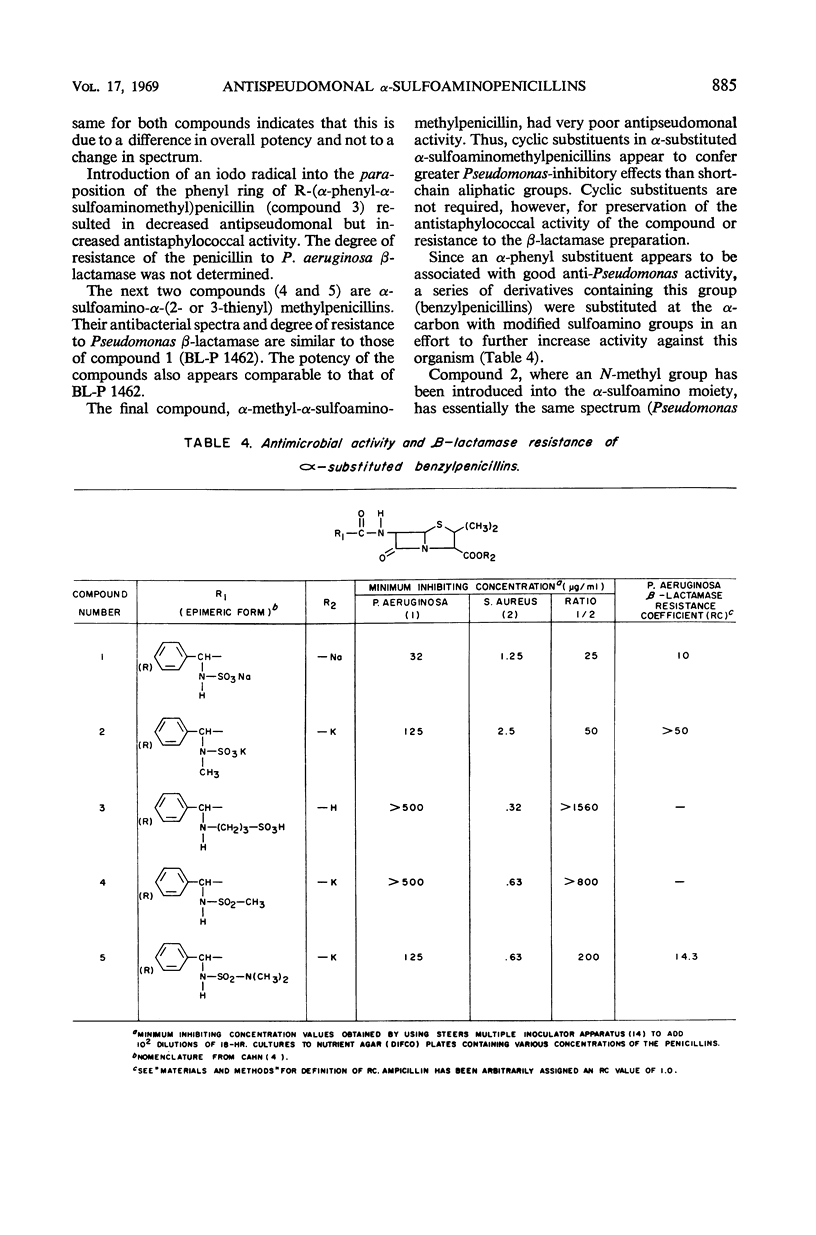
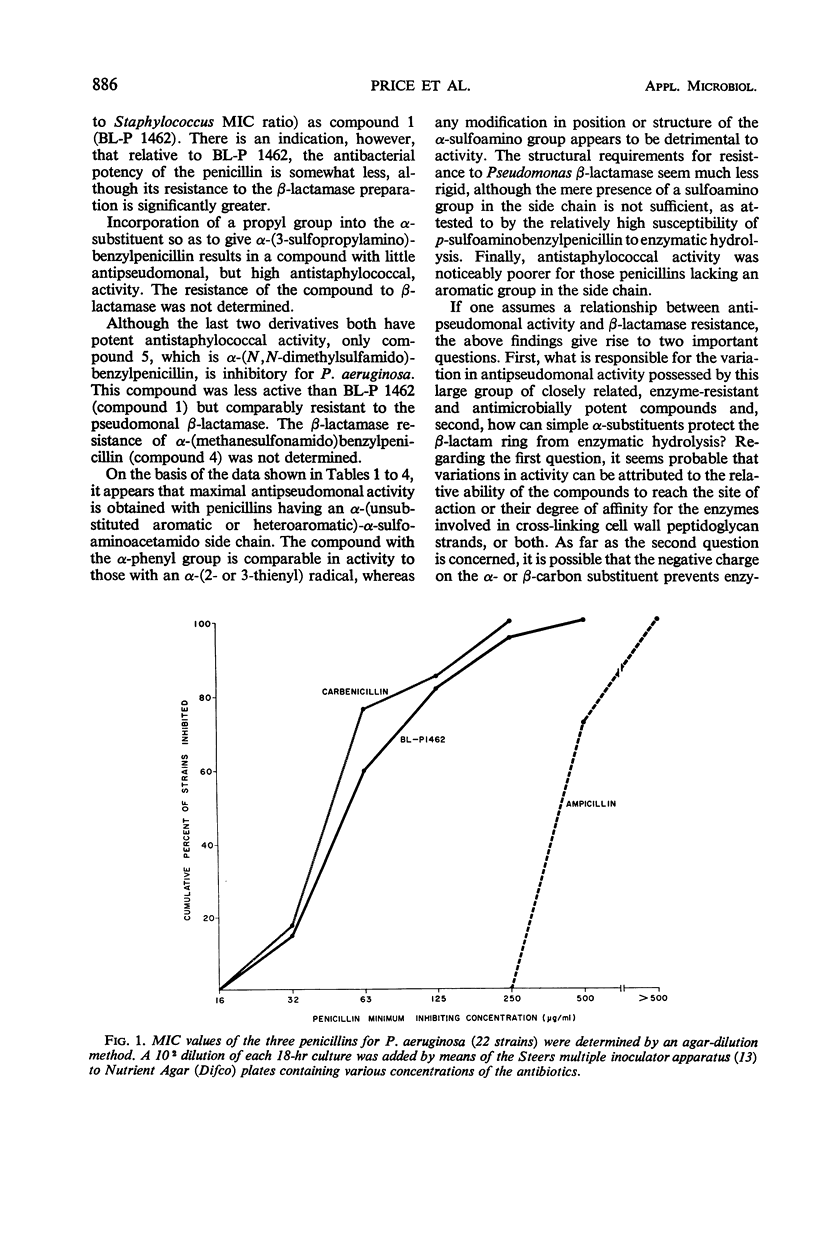
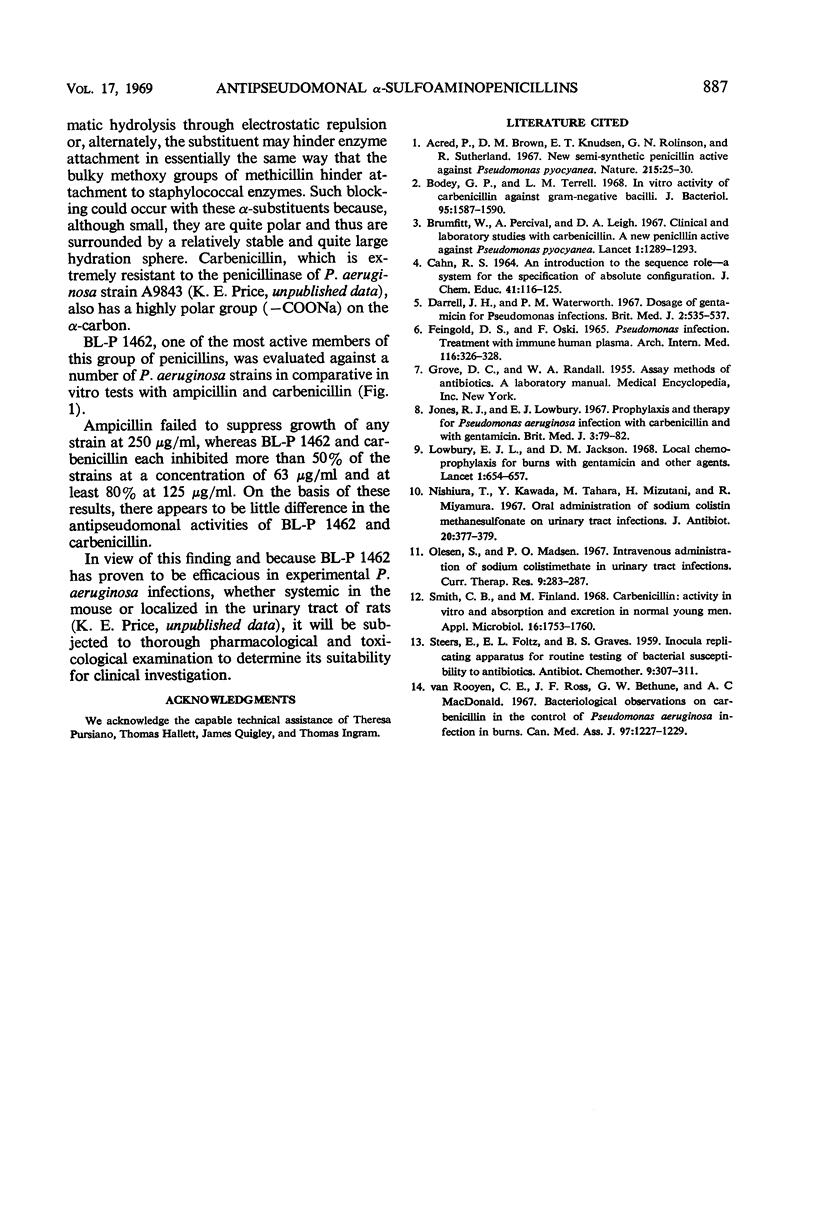
Selected References
These references are in PubMed. This may not be the complete list of references from this article.
- Acred P., Brown D. M., Knudsen E. T., Rolinson G. N., Sutherland R. New semi-synthetic penicillin active against Pseudomonas pyocyanea. Nature. 1967 Jul 1;215(5096):25–30. doi: 10.1038/215025a0. [DOI] [PubMed] [Google Scholar]
- Bodey G. P., Terrell L. M. In vitro activity of carbenicillin against gram-negative bacilli. J Bacteriol. 1968 May;95(5):1587–1590. doi: 10.1128/jb.95.5.1587-1590.1968. [DOI] [PMC free article] [PubMed] [Google Scholar]
- Brumfitt W., Percival A., Leigh D. A. Clinical and laboratory studies with carbenicillin. A new penicillin active against Pseudomonas pyocyanea. Lancet. 1967 Jun 17;1(7503):1289–1293. doi: 10.1016/s0140-6736(67)91590-5. [DOI] [PubMed] [Google Scholar]
- Darrell J. H., Waterworth P. M. Dosage of gentamicin for pseudomonas infections. Br Med J. 1967 May 27;2(5551):535–537. doi: 10.1136/bmj.2.5551.535. [DOI] [PMC free article] [PubMed] [Google Scholar]
- FEINGOLD D. S., OSKI F. PSEUDOMONAS INFECTION. TREATMENT WITH IMMUNE PLASMA. Arch Intern Med. 1965 Sep;116:326–328. doi: 10.1001/archinte.1965.03870030006002. [DOI] [PubMed] [Google Scholar]
- Jones R. J., Lowbury E. J. Prophylaxis and therapy for Pseudomonas aeruginosa infection with carbenicillin and with gentamicin. Br Med J. 1967 Jul 8;3(5557):79–82. doi: 10.1136/bmj.3.5557.79. [DOI] [PMC free article] [PubMed] [Google Scholar]
- Lowbury E. J., Jackson D. M. Local chemoprophylaxis for burns with gentamicin and other agents. Lancet. 1968 Mar 30;1(7544):654–657. doi: 10.1016/s0140-6736(68)92096-5. [DOI] [PubMed] [Google Scholar]
- Nishimura T., Kawada Y., Tahara M., Mizutani H., Miyamura R. Oral administration of sodium colistin methanesulfonate on urinary tract infections. J Antibiot (Tokyo) 1967 Nov;20(6):377–379. [PubMed] [Google Scholar]
- Olesen S., Madsen P. O. Intravenous administration of sodium colistimethate in urinary tract infections. Curr Ther Res Clin Exp. 1967 Jun;9(6):283–287. [PubMed] [Google Scholar]
- Smith C. B., Finland M. Carbenicillin: activity in vitro and absorption and excretion in normal young men. Appl Microbiol. 1968 Nov;16(11):1753–1760. doi: 10.1128/am.16.11.1753-1760.1968. [DOI] [PMC free article] [PubMed] [Google Scholar]
- Van Rooyen C. E., Ross J. F., Bethune G. W., MacDonald A. C. Bacteriological observations on carbenicillin in the control of Pseudomonas aeruginosa infection in burns. Can Med Assoc J. 1967 Nov 11;97(20):1227–1229. [PMC free article] [PubMed] [Google Scholar]


